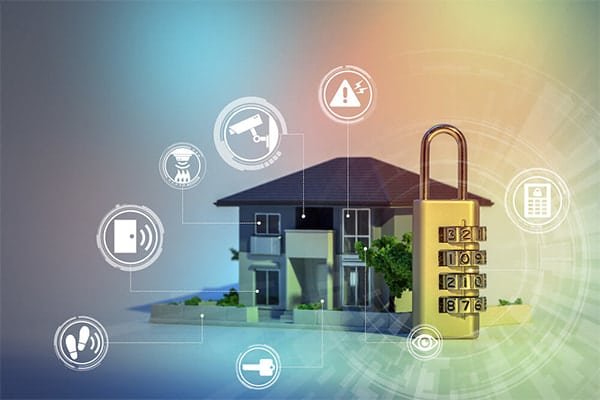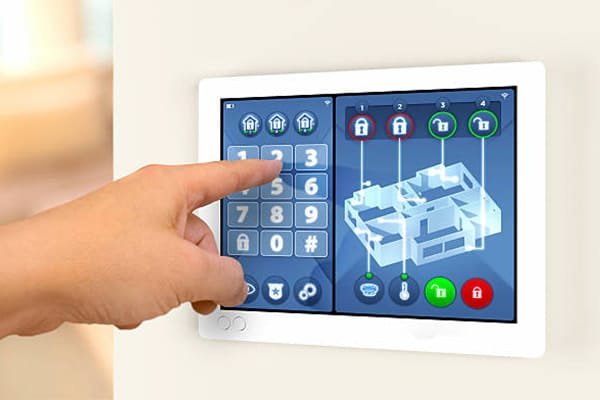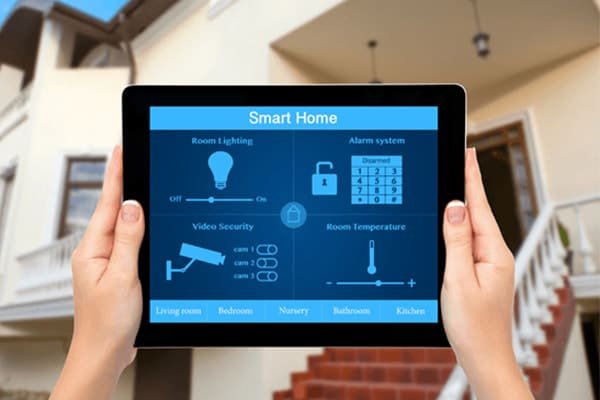Nowadays, with the increasing complexity of social security issues, many individuals and organizations are placing more emphasis on protecting their assets and ensuring the safety of their homes and businesses. Among the most reliable security solutions chosen by many is the alarm system. So, what exactly is a home automation alarm system and how does it work? Let’s explore the details with NT Security.
What is a Home Automation Alarm System? How Many Types Are There?
A home automation alarm system is a support device installed in various locations such as private homes, offices, companies, etc. The components of this system are connected to each other and transmit signals to the central processing unit. When detecting any unusual signs like the presence of strangers, a sudden increase in temperature, or smoke release, the alarm will either sound or notify the user, depending on the specific device being used.

Currently, there are two main types of commonly used smart home automation alarm systems: anti-theft home automation alarm systems and fire detection home automation alarm systems, installed in offices, companies, agencies, apartment buildings, hotels, etc. Additionally, there are various other alarm devices installed in factories and plants, depending on user requirements.
What is the Structure of a Home Automation Alarm System?
To better understand how the home automation alarm system works, let’s first explore the detailed structure of this system. Today’s alarm and warning systems consist of three main parts: the central processing unit, the sensor unit, and the execution unit. Each part plays a distinct role and function, forming a closed-loop system. Specifically:
Central Processing Unit
The central processing unit is crucial to the alarm system and is often referred to as the intelligent “brain” that controls all activities. This unit is responsible for receiving information and signals from the sensor devices and then transmitting them to the user via supporting devices or the execution unit.
Sensor Unit
This unit records environmental changes according to preset configurations. It contains switches that open or close, and when any change occurs, signals are sent back to the central processing unit. The sensor unit also has an emergency button that allows users to activate the alarm in urgent or dangerous situations. Additionally, various types of sensors can be selected based on user needs and preferences.
Execution Unit
This part of the home automation alarm system is responsible for notifying users through sirens, alarm bells, or mobile devices if previously connected. The execution unit receives direct control signals from the central processing unit and can be turned on, off, or adjusted remotely, providing flexibility.

What Types of Sensors Are in the Home Automation Alarm System?
The alarm system is equipped with several types of sensors to detect potential dangers and intruders. Below are some common types of alarm sensors:
- Door and Window Sensors: These sensors are usually attached to doors or windows and are triggered when the door or window is not properly closed.
- Glass Break Sensors: These detect the sound of breaking glass, which may occur during an intrusion or when an object hits the glass.
- Motion Sensors: When intruders are not detected by other sensors, motion sensors capture movement inside or outside the house and trigger an alarm when there is movement.

Additionally, the home automation alarm system can be equipped with other sensors to detect environmental hazards, such as:
- Carbon Monoxide (CO) Sensors: Detect harmful CO gas produced by combustion devices like gas stoves and trigger an alert for immediate evacuation.
- Temperature Sensors: These detect sudden changes in temperature, potentially predicting incidents like fires.
- Smoke Detectors: Working with alarm sensors, smoke detectors provide early warnings of potential fire risks.
How Does the Home Automation Alarm System Work?
This system works by sending signals to a central monitoring station when the sensors detect unusual activity. At the heart of the system is the alarm control panel, through which all the sensors “communicate.”
When an alarm is triggered, the system sends an alert to the central monitoring station, emitting alarm sounds through speakers and flashing alarm lights. The system also sends notifications to the user’s mobile phone, allowing them to respond promptly.
Moreover, modern alarm execution devices can release smoke or anesthetic gas to deter illegal intruders, enhancing user safety.

===> Learn more: The Role of Video Surveillance Systems in Enterprise Infrastructure
Benefits of Installing a Home Automation Alarm System
Alarm systems are becoming increasingly popular and trusted, especially in densely populated areas with complex security issues. Installing a home automation alarm system offers several practical benefits, helping safeguard homes and businesses. Below are some key advantages:
- Alerts residents during emergencies such as fires, toxic smoke, or other life-threatening situations.
- An effective anti-theft solution that helps users proactively prevent theft and minimize damage during break-ins or intrusions.
- Early detection of potential incidents like electrical fires or explosions.
- Anti-theft alarm systems provide homeowners with peace of mind when they are away, protecting their property and family safety.
- The system can automatically contact the police, ambulance, or fire department if pre-programmed to assist in emergencies.

Things to Consider When Installing a Home Automation Alarm System
While installing an alarm system is an effective solution for enhancing security, several important factors should be considered to ensure optimal system performance and benefits:
- Cost: Before deciding to install a system, consider your budget and select a system that fits. A customizable system will allow you to choose the necessary features while removing unrelated ones to save costs.
- Power Supply: Ensure the alarm system can function during power outages. Most modern devices use batteries and WiFi connections, so you may opt for solar energy to maintain system stability and continuity.
- Ease of Installation: Choosing a wireless home automation alarm system simplifies the installation process. If you are knowledgeable, you can select a modern system and install it yourself, saving time and money.

NT Security – A Trusted and Professional Home Automation Alarm System Installer
Today, many companies provide consultation and installation of home automation alarm systems for customers. NT Security is one of the most trusted and highly-rated options.
NT Security specializes in providing top-notch security solutions with years of experience. We are committed to installing high-quality home automation alarm systems that are directly imported and quality-checked by experts before installation.
Moreover, NT Security continuously updates its technology to meet customers’ demands. Additionally, NT Security’s 24-hour online monitoring center is always ready to assist customers in case of any incidents.
Affordable Prices
One of the reasons NT Security is trusted by many customers is our competitive pricing. Whether it’s installing a security alarm system or other services like installing surveillance cameras, vehicle control systems, or security services, NT Security offers competitive rates suitable for various financial needs. All equipment is imported directly from manufacturers, eliminating intermediaries and significantly optimizing costs.

Professional and Enthusiastic Staff
NT Security prides itself on a professional and dedicated team, always ready to assist customers. Our consulting staff is well-trained in product knowledge, offering quick and in-depth support for customer inquiries. Along with this, our skilled technicians ensure fast and safe installation processes.
We hope the information provided has helped you better understand how home automation alarm systems work. If you need installation services for security alarm systems, contact NT Security today for optimal solutions at the most reasonable prices.

